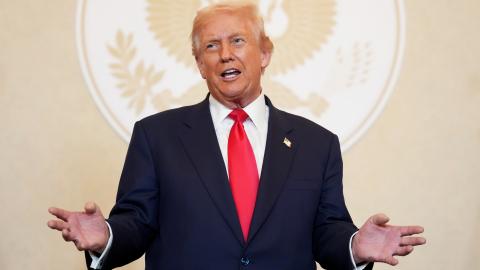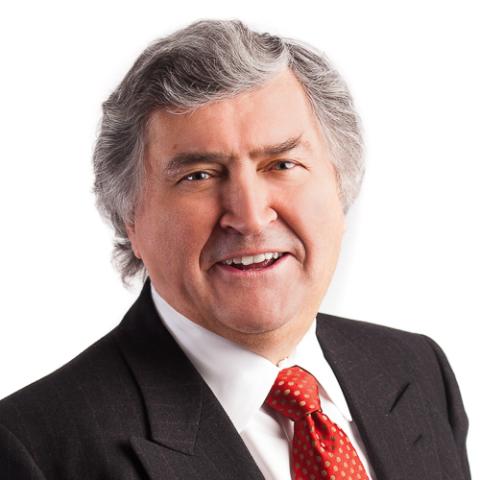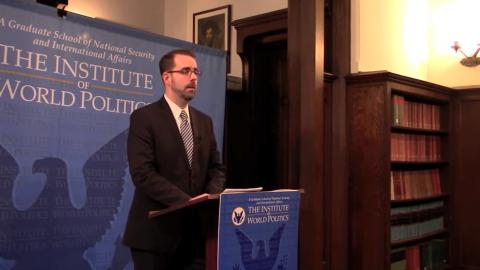Most people working in recent decades in America’s growing movement for international religious freedom are little-known except by those personally involved activists and academics. One whose name and work have generally not been recognized outside these circles is Knox Thames.
This is principally because he has worked close to the heart of things, usually in government circles, and especially in the U.S. State Department, where publicity has usually been reserved for the politicians. Hence, he has quietly shaped many people, organizations and institutions.
Only now, after leaving government service in 2021, has Thames offered reflections and lessons from this long service in “Ending Persecution: Charting the Path to Global Religious Freedom.” It is an indispensable book.
In other writings about this, he has stressed, “I provide ideas for how the United States can better religious freedom for all, not in a textbook format but in a practical examination of different kinds of persecution in places like India, Pakistan, Iraq, China, Burma and elsewhere. I also include personal stories to make it engaging for policymakers, activists, students and general readers interested in international affairs.”
In recent years, there has been an increase in the number and capacity of organizations, governmental and nongovernmental, working on religious freedom, and many of those organizations have formed coalitions and seek to work cooperatively.
Among them, Thames has personally helped shape the Religious Freedom Roundtable, a grouping of nongovernmental organizations largely centered in Washington; the Inter-Parliamentary Panel on Freedom of Religion and Belief (FoRB); the International Contact Group on Freedom of Religion or Belief (ICG-FoRB); and the Inter-Parliamentary Panel on FoRB.
He was also instrumental in shaping the intergovernmental International Religious Freedom and Belief Alliance, which now has 38 countries as members as well as five “friends” and three “observers.”
Under then Secretary of State Mike Pompeo, Thames organized the earliest “ministerial” intergovernmental conferences on religious freedom. The 2019 conference was the largest human rights conference ever held at the State Department and was also probably the world’s largest-ever religious freedom gathering.
Lest we get the impression that these have been merely diplomatic talkfests — those who have passed resolutions and legislation about little difference with empirical results — Thames also gives many examples from the words and acts of those actually suffering persecution, as well as detailing specific changes in governmental actions and policies.
These occasionally dry expositions are enlivened by anecdotes of many interactions with government officials. He recalls that Uzbek foreign minister Abdulaziz Kamilov proposed a toast to religious freedom and recounts: “Growing up Baptist, I had never had vodka before. But I went bottoms-up for the cause.”
Thames lists four main sources of persecution, which he describes as “authoritarian,” “illiberal democracy,” “extremism” and “terrorism,” and gives examples to illustrate them. This gives an able overview of the locations and agents of persecution, but more could be said on the reasons for persecution — the hopes, fears, beliefs and ideologies that drive people to persecute others.
He also recounts the United States’ own checkered history in supporting religious freedom, both at home and abroad. While America has committed far more resources to promoting religious freedom than any other country, its other policies —notably the military interventions in Iraq and Afghanistan — have had the opposite effect. In neither country did the U.S. mount a sustained campaign to support religious freedom, and most members of the non-Muslim religious minorities in Iraq have since been killed or have fled the country.
His final chapter outlines how religious freedom relates to other human rights, and particularly because of this interrelation, he persuasively argues the need and importance of increased funding, training and religious refugee resettlement. This goes beyond simply arguing that we need to have more money and do more.
He offers concrete suggestions for improving religious freedom organizations and policy. One of these is to reorganize the U.S. Commission on International Religious Freedom instead as an American Council on International Religious Freedom. This would be more of a funding agency akin to the National Endowment for Democracy that could support the work of organizations promoting religious freedom. But I wonder, as in other areas, why not try for both?
Authors often do not have a final say on the titles of their books, but “Ending Persecution” seems too ambitious. Religious freedom has been declining and religious persecution increasing in the world. This is not any criticism of the religious freedom movements since, without their work, the situation would likely be much worse. Democracy itself and human rights in general have also been deteriorating worldwide.
There are many reasons for this, but one is that the relative international power of the United States and Europe has been decreasing while that of authoritarian regimes, such as China, Russia and Iran, has been growing. The promotion of religious freedom now faces increasingly stiff headwinds.
Also, in politics generally, most problems are not “solved” in the sense that they go away. Rather they may be minimized or else changed into less intractable problems. This is a hope for religious freedom, and Knox Thames’ excellent book fleshes out this hope and provides practical guidance for realizing it.
Enjoyed this article? Subscribe to Hudson’s newsletters to stay up to date with our latest content.















